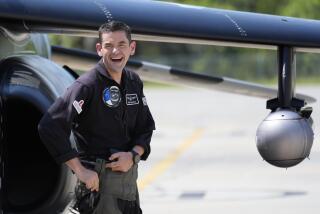Video] SpaceX hurtles toward space station as NASA dreams big
- Share via
SpaceX’s Dragon spacecraft was successfully launched Sunday, and by Wednesday morning the International Space Station crew should be greeting it with open arms.
NASA’s Sunita Williams, ISS commander, and Japanese colleague Aki Hoshide will stretch out the station’s robotic arm to install the Dragon on Wednesday at 4:22 a.m. (7:22 a.m. Eastern), according to NASA. The Dragon will be attached to the station for 18 days before heading back to Earth, splashing down in the Pacific off Southern California.
There was a sense of euphoria at NASA and SpaceX, or Space Exploration Technologies Corp., with the kickoff of a mission that inaugurates a new era for NASA -- one in which private companies resupply the station by contract with NASA.
PHOTOS: Awesome images from space
SpaceX’s billionaire CEO, Elon Musk, said: “We still have a lot of work to do... as we guide Dragon’s approach to the space station. But the launch was an unqualified success.”
Meanwhile, NASA is gearing up for another space-station first -- a yearlong mission by two astronauts that will give researchers a chance to better study the effects of extended time in space on the human body.
Earlier this month, the space agency and its international partners agreed to send one U.S. astronaut and one Russian cosmonaut on the yearlong expedition. The pair will travel in a Russian Soyuz spacecraft in a voyage to begin spring 2015.
SPACE QUIZ: Blue moons, meteors and more
There have been people aboard the space station for 12 years now, which has given researchers “valuable, often surprising” insight on how microgravity affects human bones and muscles, eyesight, strength and other physical factors, NASA says.
Now scientists want to know more, with the long-term goal of going farther and deeper into space.
“In order for us to eventually move beyond low Earth orbit, we need to better understand how humans adapt to long-term spaceflight,” Michael Suffredini, International Space Station program manager, said in an announcement of the plan.
More to Read
Sign up for Essential California
The most important California stories and recommendations in your inbox every morning.
You may occasionally receive promotional content from the Los Angeles Times.











